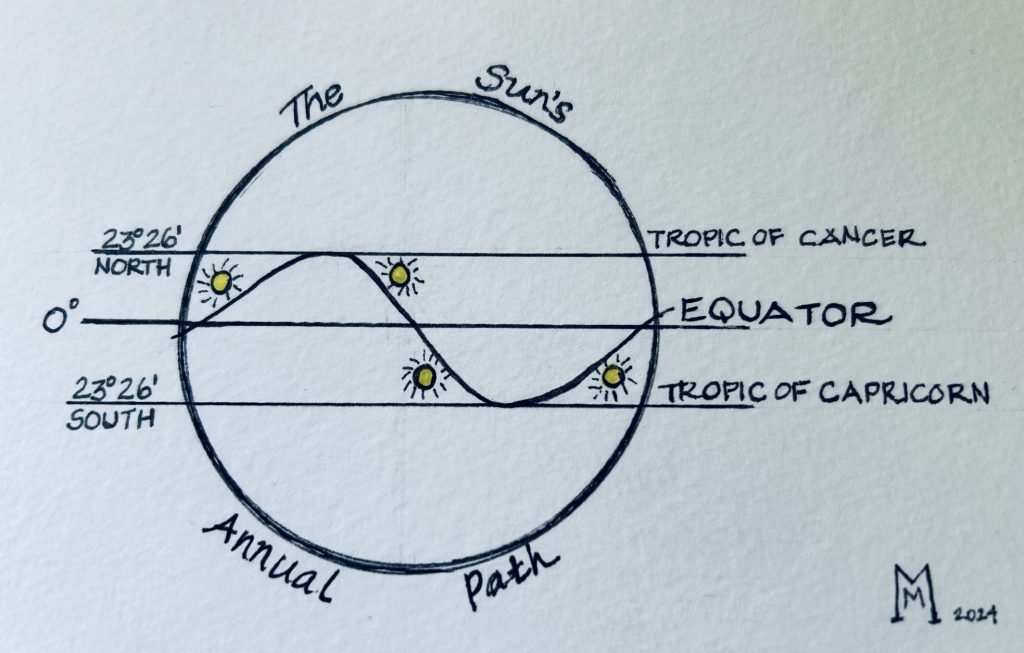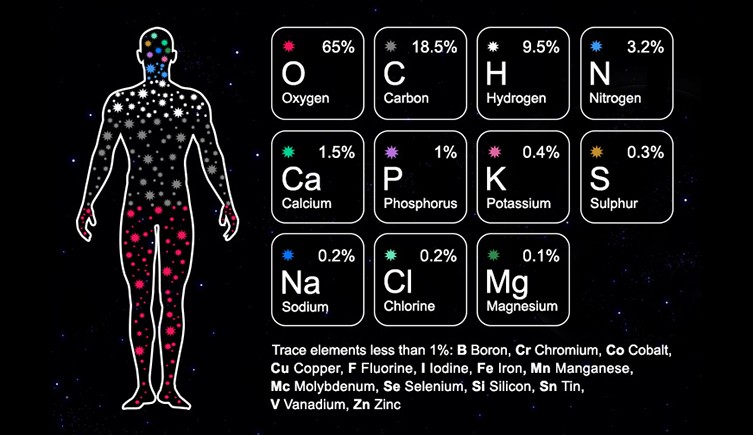Astrology Basics posts are designed for you to easily learn astrology terminology. These posts explain the meanings of an astrological term, how it’s applied, and why.
Declination isn’t a commonly used term on popular mainstream astrology sites . . . yet. Think of declination as a celestial map term and you’ll be more than half-way in understanding the basics of this important term.
In astronomy and astrology, declination is a measurement of planetary latitude. To orient ourselves on Earth, we use longitude and latitude all the time—whether you receive directions through Google maps, or you use an actual map to figure out where you’re at in physical space. It’s all about orientation! Put another way, declination is the vertical measurement in our starry skies of any one of our solar system planets.
Specifically, declination “measures how far the Sun and the planets move above [north of] and below [south of] the celestial equator.”[1] Astrology tracks the declination of all the planets to show the latitude of each planet when you born.
The celestial equator is the longitudinal—think “horizontal”—baseline for charting declinations. The celestial equator is simply the extended Earth equator out into space, complete with the extended Tropic of Cancer above and the extended Tropic of Capricorn below.
[1] Paul F. Newman, Declination in Astrology: The Steps of the Sun. 2006.
How is this applied?
Our Sun and our equator set the boundaries in the celestial skies for these main declination map markers.
- The Sun’s yearly path as seen from Earth.
- The celestial equator is the zero point (0º) for declinations.
- The 23º 26’ latitude of height [north] of the Tropic Cancer that’s mirrored by the 23º 26’ depth [south] of the celestial Tropic of Capricorn.
- Currently, 23º 26’ is the Sun’s latitude peak—meaning that’s how high in the sky it appears to be in summer and how low it appears in the sky in winter (northern hemisphere).
These are boundary markers for the Sun’s annual path viewed from the Earth. See the illustration of this below:

Why is this important to know? Because . . .
- The Sun, the constant in our solar system, sets and maintains the celestial ecliptic path for us.
- In relation to the zodiac, this “royal highway of the Sun[1]” runs through the two zero points of the equinoxes—0º Aries and 0º Libra—which is when there’s equal hours of daylight and night. When the Sun the heights of its path reached at 23º 26’ Cancer and 23º 26’ Capricorn at the solstices.
- These four major annual solar events set our seasons and the traditional rulership of astrological houses.
- All around the world and from prehistory to now, people have honored, celebrated, kept time through and built astonishing monuments to the Sun’s path.
- The planets routinely rotate around within the parameters of the Sun’s ecliptic. And some of the planets occasionally slip past that 23º 26’ solar boundary. When that happens, the planet is literally and symbolically out of the Sun’s limits and reach. During that time of soaring higher or lower than the Sun, that planet is called “Out-of-Bounds” (OOB).
- A person who has one or more OOB planets in their natal chart has some serious special sauce in their stardust make-up! If this applies to you, you definitely color outside the lines in many different ways.
[1] KT Boehrer, Declination: The Other Dimension. 1994.



